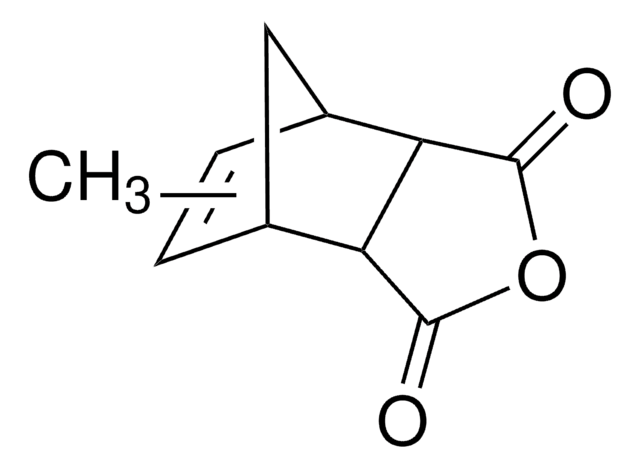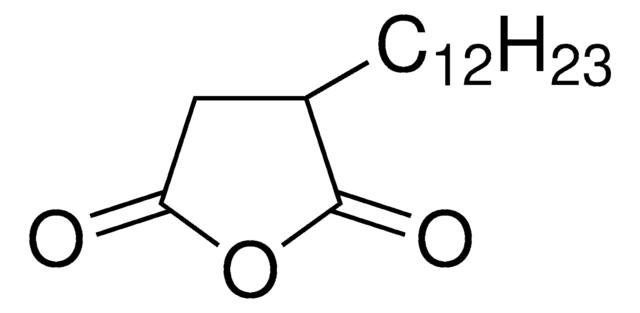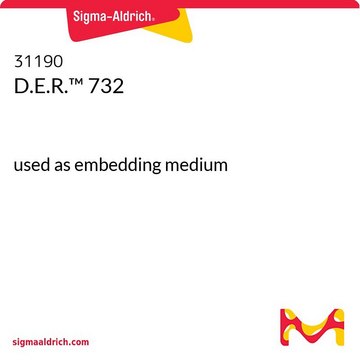45359
Epoxy Embedding Medium kit
embedding resin for electron microscopy
Sinonimo/i:
Epon™ substitute embedding medium kit
About This Item
Prodotti consigliati
Livello qualitativo
pH
5-7
Densità
1.9 g/cm3
applicazioni
hematology
histology
Temperatura di conservazione
2-8°C
Descrizione generale
Applicazioni
- to study the role of NDRG2, an essential colonic epithelial barrier regulator, in gut homeostasis maintenance and colitis-associated tumor development
- to study the interaction of polymer scaffold nanofibers with growing cells
- to study the morphological characterization of postembryonic development of blood–spleen barrier in ducks
- to understand the role of NOD1/NOD2 receptors in Fusobacterium nucleatum-mediated neutrophil extracellular traps
Caratteristiche e vantaggi
- Excellent medium for embedding a wide variety of tissues, including both plant and animal.
- Facilitates rapid embedding (less than 3 hours).
- Low viscosity facilitates rapid tissue penetration.
- Desirable hardness is easy to obtain to suit a specific tissue type.
Componenti
45347 Hardener MNA 250 ml
45346 Hardener DDSA 250 ml
45348 Accelerator DMP 30 250 ml
Note legali
Prodotti correlati
Avvertenze
Danger
Indicazioni di pericolo
Classi di pericolo
Acute Tox. 4 Oral - Aquatic Chronic 4 - Eye Dam. 1 - Resp. Sens. 1 - Skin Corr. 1B - Skin Sens. 1 - STOT SE 3
Organi bersaglio
Respiratory system
Codice della classe di stoccaggio
8A - Combustible corrosive hazardous materials
Punto d’infiammabilità (°F)
275.0 °F
Punto d’infiammabilità (°C)
135 °C
Certificati d'analisi (COA)
Cerca il Certificati d'analisi (COA) digitando il numero di lotto/batch corrispondente. I numeri di lotto o di batch sono stampati sull'etichetta dei prodotti dopo la parola ‘Lotto’ o ‘Batch’.
Possiedi già questo prodotto?
I documenti relativi ai prodotti acquistati recentemente sono disponibili nell’Archivio dei documenti.
I clienti hanno visto anche
Il team dei nostri ricercatori vanta grande esperienza in tutte le aree della ricerca quali Life Science, scienza dei materiali, sintesi chimica, cromatografia, discipline analitiche, ecc..
Contatta l'Assistenza Tecnica.












